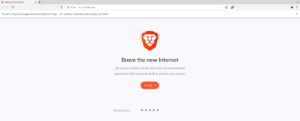
$ ls -l /etc/alternatives/gnome-www-browser Lrwxrwxrwx 1 root root 29 /etc/alternatives/x-www-browser -> /usr/bin/brave-browser-stable* $ xdg-mime query default x-scheme-handler/https $ xdg-mime query default x-scheme-handler/http If you are wondering what your default web browser is set to on a Debian-based system, there are several things to look at: $ xdg-settings get default-web-browser The instructions below were written originally drafted by one of our Senior Security engineers. # Set permissions for the manifest so that all users can read it.Įcho "Native messaging host $HOST_NAME for CHROME has been installed.While you should be able to set Brave as your default browser through the UI (as explained above), Linux users may want to know how to do this via Terminal. Sed -i -e "s/HOST_PATH/$ESCAPED_HOST_PATH/" "$TARGET_DIR/$HOST_NAME.json" # Create directory to store native messaging host.Ĭp "$DIR/$HOST_" "$TARGET_DIR/$HOST_NAME.json" TARGET_DIR="$HOME/.config/google-chrome/NativeMessagingHosts" TARGET_DIR="/etc/opt/chrome/native-messaging-hosts" TARGET_DIR="$HOME/Library/Application Support/Google/Chrome/NativeMessagingHosts" TARGET_DIR="/Library/Google/Chrome/NativeMessagingHosts" # Use of this source code is governed by a BSD-style license that can be See also Installing XModules in non-supported browsers in Ubuntu 20.04 <= it has the required Brave browser paths! #!/bin/sh You can replace the references to Chrome with the locations to the Brave browser and the installation should work: Inside the AppImage you will find shell scripts like the below (one for each XModule). The reason why they are not displayed as installed is because the our default installation script does not support the Brave browser (= its file locations) yet. So it should work well with the XModules.

The Brave browser, like so many others, is built on the open-source Chromium code by Google.


 0 kommentar(er)
0 kommentar(er)
